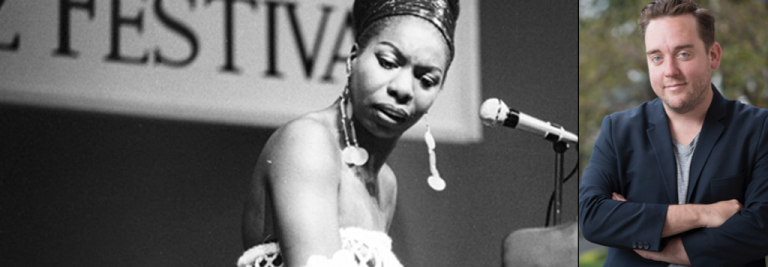For anyone who has ever attended one of our plays at the Academy of Our Lady of Mount Carmel, particularly our comedies, you know I love to fill them with music, particularly American soul music from the 1960s and 1970s. I’m a 1990s kid which meant I was at the epicenter of the Napster scandal and the explosion of pirated, unlicensed music. For better or worse (I think worse, artists should financially benefit from their art), my friends and I had access to millions of songs and, more importantly, were exposed to types of music we would never had paid to listen to on a CD or hunt down a vinyl record for. We filled our new-fangled iPods with all types of music, now accessible and seemingly free.
I fell in love with soul music from the opening countdown of “1,2,3” on Wilson Pickett’s Land of 1000 Dances. In high school my friends would tease me as I listened to their parents old records of James Brown, The O’Jays, and Percy Sledge. For them, it was all old hat, but for me a new world of sound. My father’s extensive vinyl collection was primarily filled with classic rock staples from bands I love — Billy Joel, The Who, The Rolling Stones. Classic soul music, mixed with my love of hip-hop that exploded in the late 1990s, introduced me to a brand new and vivid sound. It made me braver, more politically conscience, and perhaps a little more bold.
I began to take pride in finding the original songs that sample heavy hip-hop was using or the eye-rolling inducing image of me being a kid, looking for the near-sacred knowledge of the most obscure references possible so my friends would be impressed. I remember saying at the height of my pretentiousness, “Oh, you mean you’ve never heard 1964’s Sam Cooke at the Copa?” It makes me a little nauseous now.
Good art stands the test of time, great art changes with you — and so it was the case for me when I rediscovered the gut punching, heart racing, feet tapping, pure exuberance and rawness of the music of Nina Simone. I was reintroduced to her music after watching 2015’s What Happened, Miss Simone? the Academy Award shortlisted documentary. She was uncontainable and singular. She placed everything in her music which was a brilliant amalgamation of blues, pop, soul, jazz and even rock n’ roll. She grew up in North Carolina and, radicalized by the civil rights movement of the 1950s and 1960s, her music told the story of her journey. Whether it was the influence of the black church, growing up the daughter of a preacher in Sinnerman or the powerful dirge of Strange Fruit which depicts the brutal violence African-Americans experienced in the American South. Her struggles with mental illness and her vulnerability were laid bare in her version of Here Comes the Sun and probably her best known song, Feeling Good.
In my favorite of her songs, the brilliantly re-arranged Ain’t Got No from the clunky and, frankly, goofy musical Hair, she turns what is a song about youthful revolution into a bold celebration of her womanhood, her race, her culture and her humanity. “What do I got?” She repeatedly belts, “I got life, that no one can take away!” Though her experience and mine could never be more different, I find myself listening to her music in the morning — nothing gets me going like the sound of this woman’s sheer bravery in front of existential questions of life and death. In the expression of her truth she can sing about the things she doesn’t have (schooling, cigarettes, wine) and it never feels sardonic. This is life, as real as it gets. Although she lived in France in her later years, disillusioned by American life and a waning career, she was a quintessential voice and a deeply American voice that, like our country, held the breath of beauty, pain, and complication.
“I am what I am” she croons on A Single Woman. Thank God for that Miss Simone.
I’ll be seeing you,
Elliot



